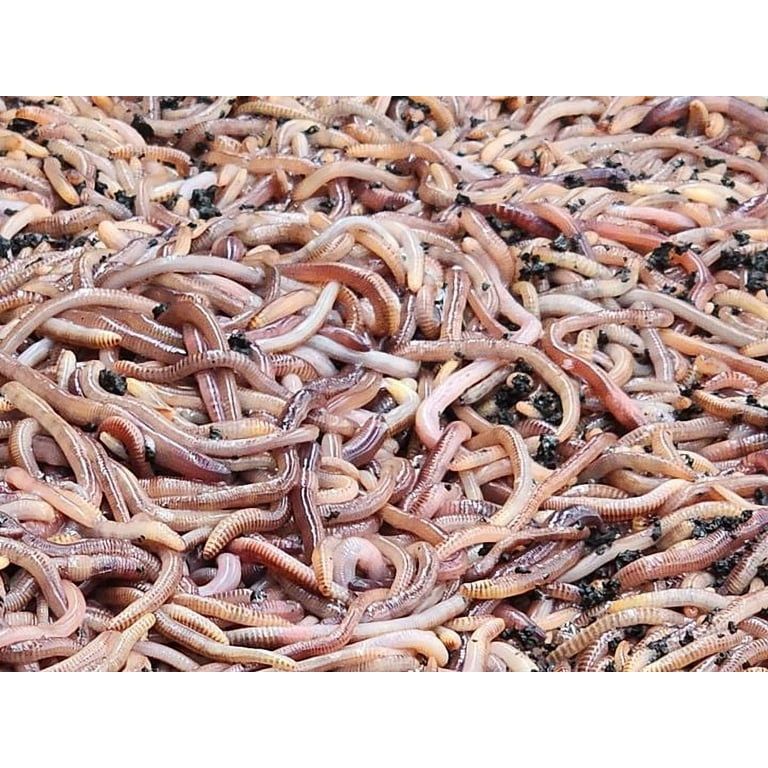Organic farming red worms: Guide to thriving setups
Organic farming red worms: Guide to thriving setups
Blog Article
Red Wigglers: Your Eco-Friendly Solution for a Greener Garden
Red wigglers, or Eisenia fetida, offer a lasting strategy to boosting garden health and wellness through vermicomposting. These worms not just assist in the malfunction of organic waste however likewise add to boosted dirt framework and fertility. By integrating red wigglers into your horticulture methods, you can effectively take care of waste while nurturing a vibrant environment (red worms). Nonetheless, the benefits extend past plain composting; recognizing the subtleties of their care and ideal use can substantially boost your gardening efforts. What crucial techniques can guarantee your vermicomposting system prospers while maximizing its influence on your yard's vigor?
(Lake Hickory Worms,)
What Are Red Wigglers?
Although typically incorrect for normal earthworms, red wigglers (Eisenia fetida) are an unique varieties known for their effectiveness in composting raw material. These worms grow in abundant, natural settings, such as compost heap and vermicomposting systems, where they play a vital duty in damaging down waste. Unlike their even more usual counterparts, red wigglers prefer a warmer environment, usually between 55 ° F and 77 ° F, which maximizes their task and productivity.
Red wigglers are characterized by their reddish-brown coloration and segmented bodies, which can expand up to four inches in length. They have an one-of-a-kind capacity to consume and digest natural products at an outstanding price, processing up to half their body weight daily. This rapid disintegration procedure not only improves the dirt however likewise adds to the overall health of the garden ecological community.
In terms of reproduction, red wigglers are prolific, with the ability of creating cocoons which contain several eggs. This enables quick population growth, making them a suitable option for composting undertakings. Their flexibility and ravenous appetite for natural waste placement red wigglers as an essential ally for eco conscious gardeners seeking lasting techniques.
Advantages of Making Use Of Red Wigglers
Using red wigglers in the garden uses countless benefits that improve both soil top quality and plant health. These earthworms are outstanding decomposers, damaging down organic issue such as kitchen scraps and yard waste right into nutrient-rich castings. These spreadings, frequently described as "worm gold," provide crucial nutrients that boost soil fertility, promoting vibrant plant growth.
Red wigglers also enhance soil structure. The presence of red wigglers boosts microbial activity in the soil, developing a thriving ecosystem that adds to disease resistance and boosted plant health.
An additional considerable advantage of making use of red wigglers is their ability to reduce waste. In summary, incorporating red wigglers into horticulture techniques returns substantial advantages, making them an important enhancement to any kind of eco-conscious yard.
(red wigglers for sale)
Just How to Begin Vermicomposting
To start vermicomposting, it's necessary to develop an appropriate atmosphere for red wigglers to thrive, as their success straight influences the efficiency of the composting procedure. Start by picking a container, such as a plastic or wood container, with appropriate drain and air flow. A dimension of approximately 2 square feet is excellent for a household, permitting for a manageable worm population.
Following, prepare bed linens material that is moist however not excessively damp. Shredded newspaper, cardboard, and coconut coir are exceptional selections, giving a comfy habitat while also serving as a carbon resource. Fill up the container with 4 to 6 inches of bed linen.
After establishing the bedding, introduce your red wigglers. A common beginning populace has to do with 1 extra pound of worms, which can consume roughly half an extra pound of food scraps daily. It is crucial to include food scraps progressively, concentrating on vegetable peelings, fruit waste, and coffee grounds, while avoiding meat, dairy, and oily foods to stop smells.
Keeping a Healthy And Balanced Worm Bin
Once your red wigglers are settled into their brand-new bedding, keeping a healthy and balanced worm bin becomes critical to ensure ideal composting problems. The key elements to check consist of dampness, temperature level, and oygenation. Preferably, the worm bin ought to be kept wet yet not soaked; a moisture degree around 60-70% is ideal. To accomplish this, routinely examine the bed linen and include water as needed, while likewise using dry materials such as shredded newspaper to soak up excess wetness.
Temperature level control is similarly essential. Red wigglers grow in environments between 55 ° F and 77 ° F(13 ° C to 25 ° C) Prevent revealing the container to severe temperatures; severe warmth can kill the worms, while excessive cold can reduce their task.
Aeration is essential to stop anaerobic problems, which can cause undesirable odors and damage the worms. Turn the bed linen delicately every few weeks to advertise air flow and disperse food uniformly.
Feeding your red wigglers is another important facet. Deal a balanced diet of try these out cooking area scraps, preventing citrus and spicy foods, which can be damaging to their health and wellness. By regularly monitoring these variables, you can guarantee a flourishing ecological community within your worm bin.

Tips for Using Worm Castings
On a regular basis incorporating worm castings into your garden can considerably boost dirt health and plant growth. To effectively utilize worm spreadings, start by figuring out the appropriate application rate, which typically varies from 10-20% of the complete dirt volume. This ensures optimum nutrient schedule without overwhelming your plants.
When using worm spreadings, mix them right into the top few inches of soil around recognized plants or integrate them right into your seed-starting mix for brand-new seedlings. Furthermore, take into consideration producing a worm tea by soaking worm castings in water for 24-48 hours.

Conclusion
The application of red wigglers in horticulture practices offers a lasting approach to squander administration and dirt enrichment. The assimilation of red wigglers into gardening regimens eventually sustains both ecological equilibrium and farming productivity. red worms.
Report this page